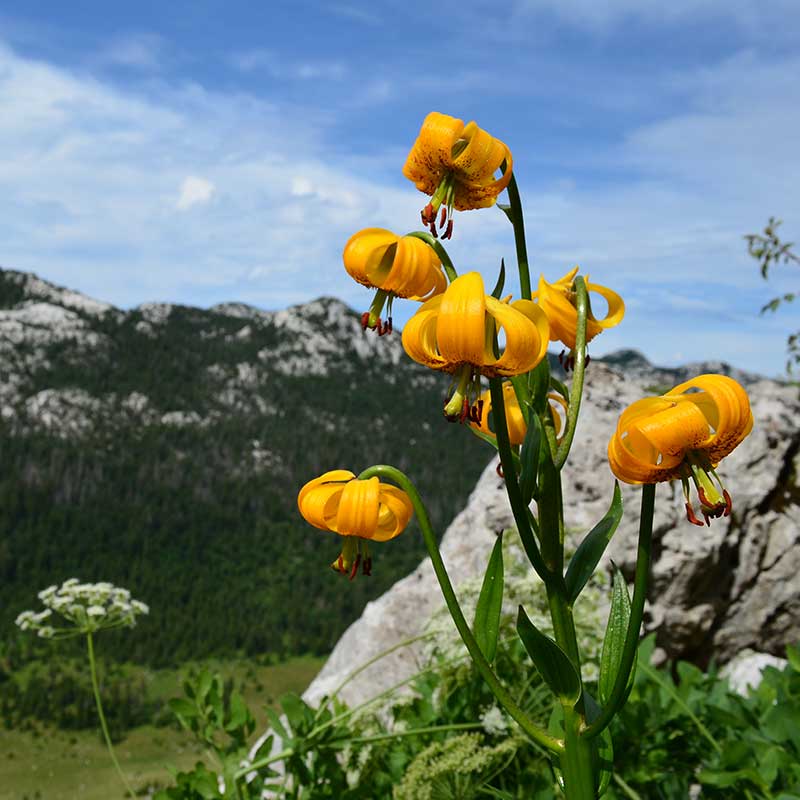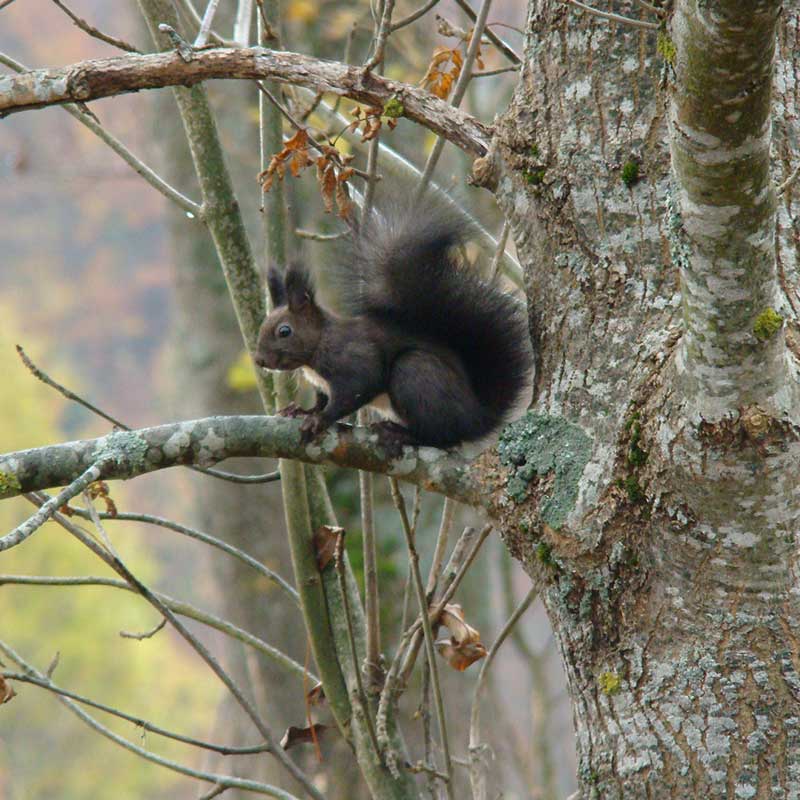Natural heritage

Flora
“The Velebit massif is certainly one of the most important if not the most important floristic area of Croatia and one of the most important centres of the European biodiversity. It is characterised by a large number of plant communities and distinct altitudinal zonation. In the area of Velebit, there are about 2000 plant species and subspecies, many rare, endangered, endemic and protected plants, some of which are only found on Velebit, e.g. Velebit degenia (Degenia velebitica), window bellflower (Campanula fenestrellata) and Croatian grassy bells (Edraianthus graminifolius var. croaticus). Today’s flora on Velebit is the result of the interaction of two vegetation zones ‒ middle European and Mediterranean. It was developed under a somewhat weaker impact of deglaciation so the tertiary species mostly avoided total icing (numerous species found on limestone rocks, in screes and alpine grasslands) and are known today as endemics or relicts. Such a tertiary relict is for example the well-known Croatian sibirea (Sibiraea altaiensis ssp. croatica).
The floristic relevance of this area is additionally increased by glacial relicts, plants that were much widely spread during the glacial period and remained today in isolated places with a colder microclimate (e.g. edelweiss (Leontopodium alpinum), spring gentian (Gentiana verna) and others).”

Fauna
The fauna of Velebit is diverse and very valuable. “We can find here large carnivores (wolf, bear, lynx, wild cat) and other mammals (boar, roe, deer, chamois), birds such as capercaillie, hazel grouse, golden eagle, different owl and woodpecker species and numerous typical mountain species. There are also some species of smaller carnivores, such as mustelid, badger and fox and especially important are the glacial relict of the Dinarides the Balkan snow vole (Dinaromys bogdanovi) and garden dormouse (Eliomys quercinus dalmaticus). There are many reptile species on Velebit (especially on the coastal side where one can find our protected vipers, the nose-horned viper and the common adder. In the area of Velebit there are also numerous species of diurnal butterflies, mostly from the Nymphalidae family. Since many of them are endangered, they are included in the Croatian and European Red List of Butterflies.
Especially valuable are branched cave systems, which abound in steno-endemic fauna.”





